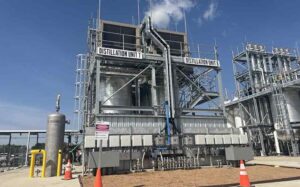Majority of ac units are under-performing
10th November 2014 USA: The majority of air-conditioners and heat pumps in the US are performing below rated energy efficiency levels due to installation faults.
USA: The majority of air-conditioners and heat pumps in the US are performing below rated energy efficiency levels due to installation faults.
The claims made in a new report from the US government’s National Institute of Standards and Technology (NIST) would hamper American efforts to trim the 30% share of residential electrical energy use devoted to cooling and heating.
The NIST research report is the first to quantify efficiency losses due to common installation errors documented in field surveys.
“Our measurements indicate that improper installation could increase household energy use for space heating and cooling on the order of 30% over what it should be,” commented Piotr Domanski, who led the NIST research.
Domanski, Hugh Henderson of CDH Energy Corp and NIST mechanical engineer Vance Payne undertook their three-year measurement and modelling study in response to surveys and other field evidence indicating that, as “typically installed,” hvac equipment may waste considerable energy. Commonly reported installation errors—or faults—include leaky ducts, improper refrigerant charge, oversizing of systems, and restricted air flow.
 In surveys reviewed by the team, the majority of air conditioning equipment evaluated in the field performed below rated energy-efficiency levels due to one or more installation faults. “Degraded equipment performance was commonly found in air conditioners, heat pumps, and related equipment,” Domanski explains. “But most studies did not measure the increase in energy consumption due to a particular fault or combination of faults, which can be difficult to do in the field.”
In surveys reviewed by the team, the majority of air conditioning equipment evaluated in the field performed below rated energy-efficiency levels due to one or more installation faults. “Degraded equipment performance was commonly found in air conditioners, heat pumps, and related equipment,” Domanski explains. “But most studies did not measure the increase in energy consumption due to a particular fault or combination of faults, which can be difficult to do in the field.”
Under controlled environmental conditions, the team characterised the performance of a heat pump while operating with any one of seven commonly encountered faults. After determining how much each fault affected energy consumption in the laboratory, the researchers investigated how these same errors might impact energy use in two types of houses—one with a basement, the other built on a concrete slab—and in five different climate zones. This part of the analysis was conducted with a simulation tool developed by CDH Energy Corp.
Leaky air ducts emerged as the “dominant fault.” Refrigerant undercharge and incorrect indoor airflow due to improperly sized ductwork followed as the most significant cause of increased energy use.
Other findings include:
• For six of the seven faults studied, associated increases in energy use are similar for slab-on-grade and basement houses. However, leaky air ducts installed in unconditioned attic space can cause the greatest increase in energy use in slab-on-grade houses.
• In hot and humid climates, duct leakage substantially increases indoor relative humidity, reducing human comfort. Occupants will typically lower the thermostat to compensate, which significantly increases energy use.
• With a few exceptions, simultaneous faults have additive effects on energy consumption.
Incorrect refrigerant charge
Evidenced by previous surveys cited in the report, incorrect refrigerant charge was a continuing problem. In a survey of 28 air conditioners in 1997, only 18% of systems had a correct refrigerant charge. In 2002, a survey of of 13,000 residential and commercial air conditioners found that 57% of all systems had an incorrect charge. Things had not improved much by 2004 when a study of 55,000 units showed that 60 % of commercial air conditioners and 62 % of residential air conditioners had an incorrect refrigerant charge. In a separate study over a three-year period and published in 2004 of 4,168 new and existing split, package, and heat pumps, 72 % had improper refrigerant charge.
The NIST Technical Note 1848 Sensitivity Analysis of Installation Faults on Heat Pump Performance can be downloaded here.







